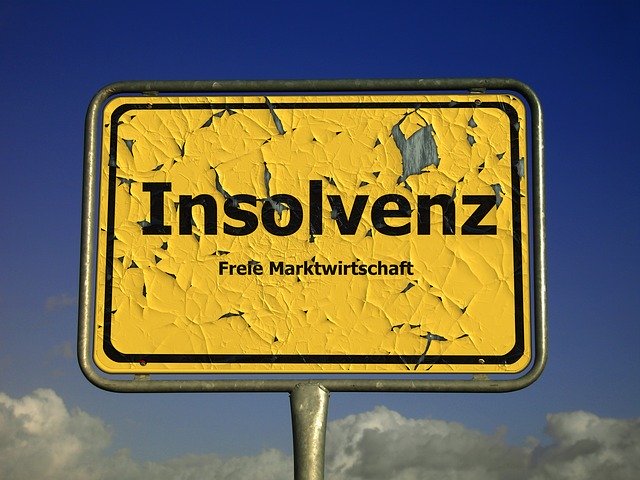It is the perfect time to review your portfolio
It’s a new year. That’s always a good time to reassess everything in life. That is often diet, exercise and relationships. After the recent debacle at Estonian/Latvian P2P site Kuetzal, we think the new year reassessment should include taking a fresh look at your P2P portfolio. We still don’t know how the Kuetzal story will end. Things do not look good right now. These events have generated huge debate among investors about how something like this could go happen, and what other sites may have similar risks. Some investors have lost money they could not afford to lose.
In the past we’ve published a lot of posts on Explore P2P that are designed to try and help investors steer away from bad sites, avoid losses, and make more money. Today, we wanted to highlight some themes from these past posts that we think are extremely important right now.
1. Make sure you are not being the 'dumb money'
This post explains in detail what we mean by this. In short – don’t invest in any loan to a company if you have not received any information about profitability, their balance sheet, or capital structure. We see this happen all the time. Particularly on the sites offering very high returns. Too many investors are buying loans on the purely on the basis of some nice photographs and some commentary from the P2P site. That’s not investing, it is gambling.
An example – Kuetzal raised €850,000 of investor money without providing any financial information at all about a petrol company. If they had, investors would have seen that the company had virtually no revenue, and no assets.
If you are investing in a secured loan – make sure that their is an independent valuation of the property, the collateral is clearly identified (property address or cadastral number), and that it is documented how the loan is being secured (i.e a first charge mortgage).

2. Consider location - some regions are higher risk
P2P investing is still very new. It began in the UK, and the regulatory framework there is now the most advanced in the world. Other countries in Western Europe are catching up. In places like Estonia and Latvia, there is a complete lack of regulation right now. Take that into consideration. Kuetzal will not be the last site in this region to close down. If you have any doubts whatsoever – SELL. Sell first and ask questions later. It is an investment motto that has stood the test of time for a reason. The P2P investment returns in places like the UK, Germany and France may be lower, but the regulatory frameworks are also significantly stronger.
3. Treat 'buyback' promises as a red flag, not a benefit
Some investors bought P2P loans because they were promised that they could sell the loan at a minimal loss (often only 5 or 10%) if anything went wrong. Some sites have made vague references to mysterious Asian companies who will buy these defaulted loans at 90 or 95 cents in the Euro. Does this really make any sense? Defaulted unsecured corporate loans tend to be sold at around 20 cents in the euro. Why would these guarantors be willing to buy them at 90 or 95 cents? Particularly if the investors in the loans have been receiving a 20% return with almost no risk. It is like believing in the tooth fairy.

4. Realise there are no prizes for being early
We get approached by new and upcoming P2P investment sites all the time. They have a few loans on their platform and a couple of employees. Would we invest our own funds in a site like that? No way. There’s no prizes for being early. Instead, monitor the site and see how well they do. How is their lending performance? Can they get to scale? Are they good operators? These are all questions that it is impossible to know at the start. Even if they are willing to pay you a small incentive bonus for joining, it’s not worth the extra risk.
5. Ask yourself whether the loan makes sense
Always ask whether it makes any financial sense for the borrower to comply with the terms of the loan. It takes 12-18 months to construct and sell a property. If the term in 9 months, that’s a red flag. Most developers work off tight margins – there’s usually not enough to justify paying 20% interest rates. Think about the loan from the borrower’s perspective, and it will help you understand how likely they will be able to pay you back. P2P loans also tend to be more expensive than bank loans – ask yourself why the borrower could not borrow from their bank. Often there is a good reason, but sometimes this is worth looking into.
6. Expect defaults and question perfect lending performance
Defaults happen. Defaults are normal. Maturity extensions are also normal. Litigation is normal. What is not normal are high interest P2P portfolios that have zero issues with their borrowers. We would like investors to embrace the sites that report defaults, and problems, because that adds credibility in our view. That’s not to say we want investors to suffer losses. That comes down to how the loans are structured. Some of our favourite P2P investment sites, such as Bridgecrowd factor defaults and extensions into their business model. Up to now, investors have been (eventually) repaid in full, because the loan amounts were always less than than the recovery prices of the collateral.

7. Be more sceptical and realistic
There’s a European P2P site that does not want to disclose any details of their loan originators. They are the only P2P site in Europe to do this. Is this because they can’t contractually do this, or because the entire site is fictional? We don’t know yet for sure, but why take the chance? We receive the same excuses again and again from sites who are not able or willing to prove to us the statements they have publicly made – ‘that’s confidential’, or ‘we are not allowed to disclose that’. Never forget that these people are asking for your money. If they can’t answer simple questions, tell them where to go.
8. Do your own analysis. It's your money
There is a ‘P2P bloggersphere’ that is unfortunately too willing to promote any old site that offers them an affiliate marketing relationship. Many of them have no professional financial or investing experience. Every new P2P site looks great to them, because each website tends to be well produced, and offers high investor returns. The Kuetzal website looked fantastic (if you were their web designer please contact us!) Don’t simply follow recommendations or advice from anyone online (including us!) It’s your money and you need to personally make sure that each investment is safe and profitable.

9. Diversify, diversify, diversify
Many Kuetzal investors invested far more than they could afford to lose. Some have potentially lost their life savings. Others have had to have very humbling and uncomfortable discussions with their spouses. The pain is real and it is not anything anyone wants to go through. We can see how this has happened. 20% returns with a buyback guarantee looks great on paper. We now can show that this is illusory. The lessons are obvious and clear. P2P investments should only form part of a diversified investment portfolio. It is not a replacement for a bank deposit. And any P2P investment portfolio greater than (say) €10,000 should be allocated across several different portfolios. If you need to diversify your portfolio, our comparison pages can give you some ideas. P2P offers a very good balance of reward and risk, and uncorrelated returns with the equity markets. Even so, the size of the P2P portfolio, and the selection of platforms needs to be carefully considered.
10. Focus on the management team
How many people work there? Does the senior team have a good reputation? Where did they work previously? Who is the making the credit decisions? We see almost no analysis or discussion about these factors online. Platforms succeed or fail on the basis of the quality of their management teams and employees. The team at Kuetzal were in their early 20’s and had previously held very junior positions at other lending companies. This never made sense. Since their closure we are now seeing much more attention being paid to who owns and controls P2P sites, and the credibility of their management teams. This is a fantastic development and hope that it continues.

Pingback: Envestio has vanished. This is what has happened, and why
Envestio is down 2, gl everyone that invested there also……..
Sander
Thanks for your article, it summarizes very nice previous advises by ExploreP2P. I want to say something about the experience of the staff, I was arguing once about how a young boy or girl can became CEO, and one of my interlocutors came with examples like Steve Jobs or Zuckerberg. I stoped arguing, because in the real life there is not such think. It is so naive to believe something like that. In the kuetzal case I was shocked by the people trying to rationalize everything, like if someone on Titanic believed that is not the ship that it was sinking but the ocean tilts.
Everything can be rationalized, and that’s the fallacy here. For every Zuckerberg, there’s 10.000 who didn’t make it, and went bankrupt. You never heard of them (nor have I), because well… why would we? However up front you don’t know who you’re betting on, so the chance is still only 0.01% that you got the next Zuck. More experienced management has a better track record, but still not 100%.
Fantastic article Oscar, it summarize perfectly the lessons learned from the last month. I really hope Kuetzal event was a wakeup call, it will be beneficial for everyone – Stronger, more transparent platforms, more informed and less greedy/naive investors. Thank you so much to you, Peer Duck etc.. for helping us there.
All what you say here was already in your old articles, but somehow most of people (myself included) didn’t want to pay attention, as 20% secured returns were just to good to care about ExploreP2P advices 😉
Thanks Alex